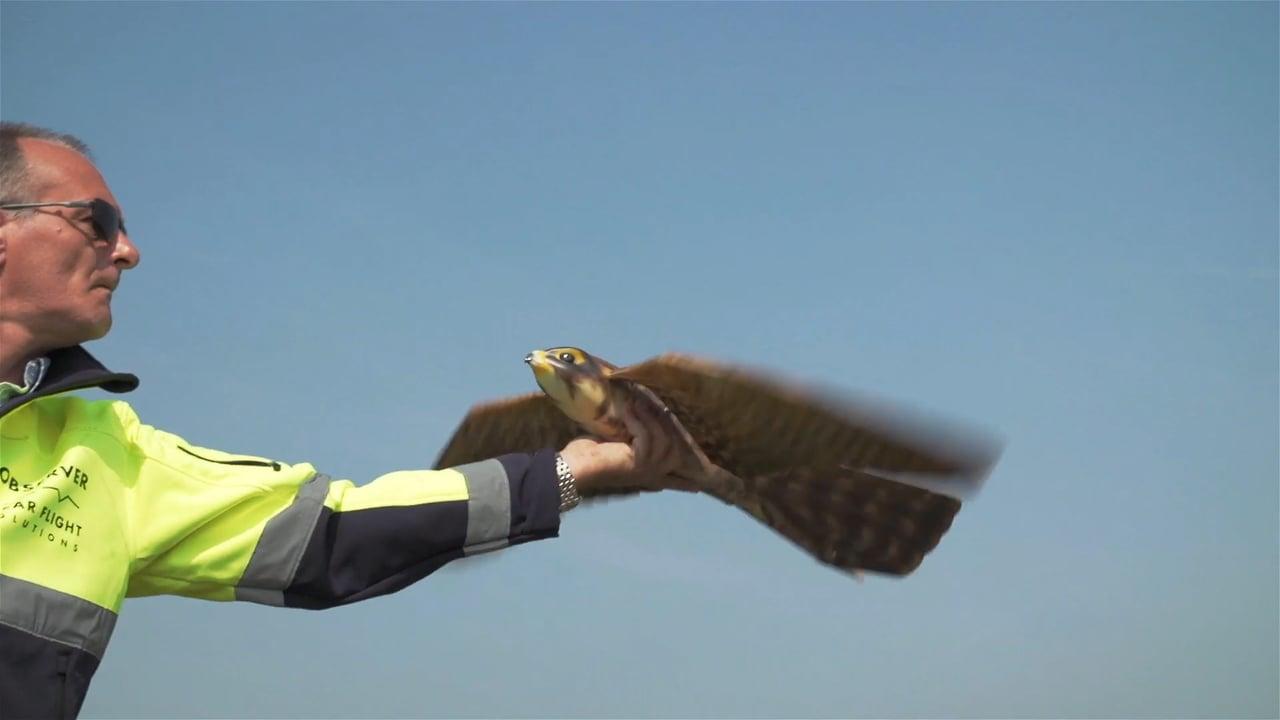Robird to the Rescue!

A Netherlands start-up has developed life-like, mechanical versions of birds of prey to help shoo other birds from airport flight paths.
Clear Flight Solutions, a Netherlands-based tech firm, has come up with a nifty solution to help put an end to dangerous bird strikes near airfields around the world. Part bird and part plane, “Robird” drones are controlled by human pilots on the ground and are intended to dissuade birds that pose a threat to aviation from visiting busy low altitude airspace near airports.
According to developers, both the peregrine falcon and the eagle versions of Robird feature realistic, life-like designs, complete with functional flapping wings. The peregrine falcon drones are designed to chase off smaller “prey” including birds that weigh under seven pounds. Meanwhile, the eagle Robird, created to look and perform like the raptor at the very top of the food chain, is designed to strike terror into the hearts of nuisance birds of all sizes.
For years, busy airports like Toronto Pearson International Airport (YYZ) and John F Kennedy International Airport (JFK) have experimented with falconry as a means of curtailing bird strikes. In 2011, JFK abandoned the use of the live birds of prey, citing the high costs associated with the program.
Clear Flight Solutions believes that this is where the Robird program might just save the day. Through a use of both raptor-like and traditional drones, the company’s Bird Control Unit (BCU) can be expected to achieve similar results to the use of live birds of prey at a substantially lower cost over the long run.
“Since the Robirds influence the eco-system in a wide area, they become the first line of defense in diminishing the presence of birds,” Clear Flight Solutions explains on its official website. “When Robirds are operated inside and outside the fences of the airport, this can increase the effects. Birds will eventually learn to avoid the area as much as possible, giving the Robirds a unique preventive effect.”
The company cautions that using Robirds as a defense against nuisance birds is most effective when used in conjunction with other proven bird mitigation measures.
“Of course, a combination of bird control tactics remains necessary, and acute measures from the BCU remain the last line of defense when there are birds very close to or on an active runway,” designers admit. “However, acute measures will not be needed quite as often, since the Robirds create a naturally unattractive environment to birds which is far more effective than what can be attained by other types of habitat management.”
[Photo: Clear Flight Solutions/Vimeo]























